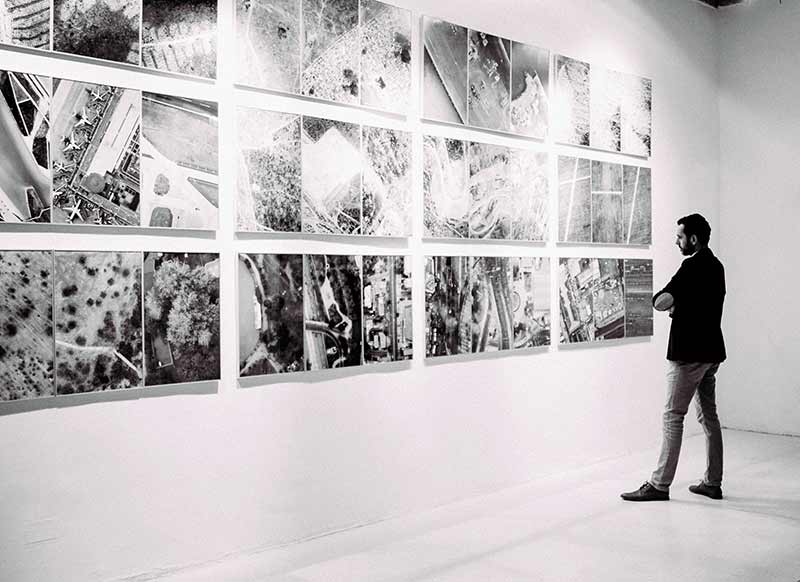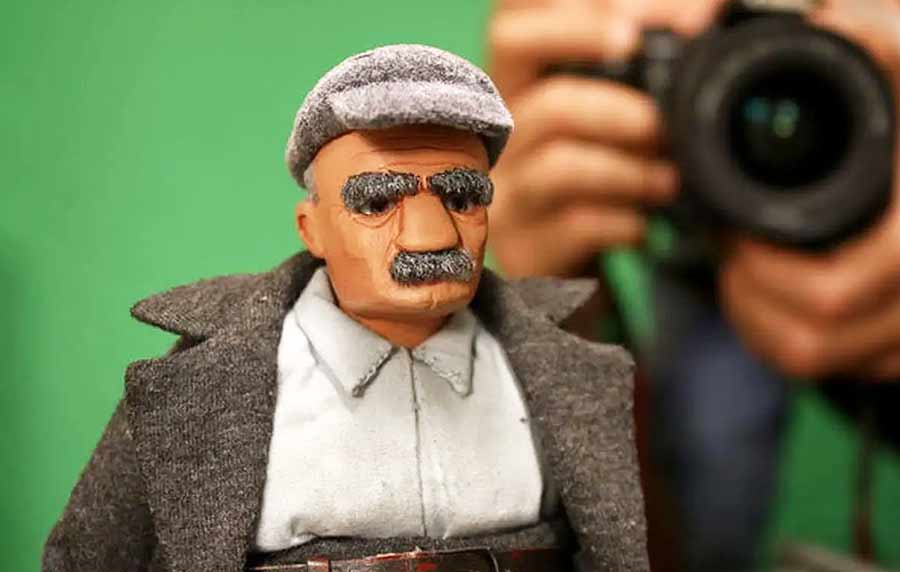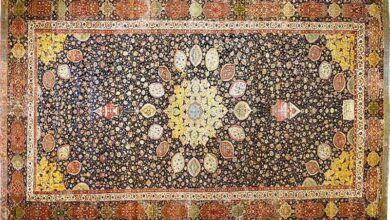Look and meaning in art of photography

Many recent works in field of photography have focused on the various currents of postmodern thought in the direction of breaking the foundations of modernism in art.
In the eyes of the authors and artists who have produced these recent works, postmodernism has been described as critical in the process of representation of the West, in which photography has played a very important role.
Prominent theorists consider photography because of its interdisciplinary nature. Perhaps the only dominant feature of this media is its flexibility. This point is clarified by the various uses of this medium in the field of culture. Applications, only a small part of which have an artistic aspect.
The first history of the photography community was in New Montale. Written as an exhibition catalog in the Museum of Modern Art under the title Photography: 1939-1839, he played a very important role in the acceptance of photography as a legitimate art form.
In the early twentieth century, the middle ground between the two forms of photography emerged in America; The kind that took advantage of the social nature of this media and the kind that was consistent with the nihilistic conception of “artistic” photography.
This is the gap between art photography and documentary photography, the confrontation of two popular myths, one symbolic and the other realistic.
In symbolic work, photography is an insight, since it is considered the art of expressing inner truth. But in documentary photography, the photographer is a witness and the photograph is a report of empirical truth.
In Europe, social photographers based their work on class realism. Walter Benjamin was one of the first theorists to write about photography in the political arena. He has considered the influence of technology on various branches of art. With the mechanical reproduction made possible by photography, the authority of the work of art, or, in Benjamin’s unparalleled “aura,” is lost. Now the mass of copies replaces the original version. One of the deepest consequences of mechanical reproduction for art that Benjamin, in contrast, has dealt with is the notion that art is no longer based on mirrors, but on politics. At the heart of this perception was the reduction of the distance between the viewer and the work of art. As the availability of a work of art increases, so does its ritual value.
The beginnings of postmodern thought in art can be found in structuralism and poststructuralism, especially in Roland Barthes’s writings. Barrett’s writings are of particular importance in the field of photography and the development of a “photographic theory”. In his photographic message (1961), Barthe examines a special “type” of photography, namely press photography.
Recent trends in the art world in the late 1970s focused their critique of “representation.” This professionalist approach to photography in the late 1960s and 1970s was largely driven by a modernist passion for artistic creation that undermined traditional conceptions of the nature of art.
The influence of conceptual art has also spread to more traditional areas of photography. Although photography was accepted as a modernist art form, the requirements of this goal, namely the purity and autonomy of photography as a medium, were no longer considered issues in the art world. Interestingly, increasing attention to this media, in turn, has increased its economic value in the art world. Focusing on photography means that photography is no longer a stranger to the art world. In the 1980s, the art world increasingly turned to photography as a way to make new contacts with social affairs, and thus as a means of revitalizing the body of art. Photography is considered a critique of most of this work. Cindy’s shameful early works focused on navigation, the kind of look at photographs, Hollywood movies, to expose the ideology that influenced them.
In the 1990s, Jonathan Kerry (1990) rejected the technically advanced linear narrative that began with “Dark Room” (Kamra Obscura) and led to modern photography, providing a new model for thinking about photography in the context of the West. Theory dates to the early nineteenth century, during which the discussion shifted from optical geometry to physiological interpretation of vision. Previous historical accounts of the evolution of “dark room” photography have been cited as a model for today’s cameras, but he abandons this view in his discussion, and his new example is the latest media orientation of photography toward technology.
Vision System
The main parts of the human eye are identified. Light enters the eye through the clear cornea. The amount of light that enters the eye is a function of the diameter of the pupil, then the lens focuses the light on a sensitive surface called the retina. The lens of the eye works much like a camera lens. The contraction and dilation of the pupil are regulated by the autonomic nervous system. The parasympathetic section controls changes in pupil size in terms of changes in brightness. (Like aperture, camera) The sympathetic section also controls the size of the pupil. And in intense emotional states, whether pleasant or unpleasant, it causes people to open up. Even mild emotional stimuli change the size of the pupil in a regular way. The surface lattice, located at the rear of the eye, is sensitive to light, and has three main layers:
A: Their rods and cones.
They are light-sensitive cells (light receptors) that convert light energy into nerve signals.
B: Bipolar cells.
These cells are connected to rods and cones.
A: Complicated cells
Their filaments form the optic nerve. It is strange that rods and cones form the back layer of the retina. Waves of light must not only come from the lens and the fluids that fill the eyeball, none of which are suitable devices for transmitting light; They also have to pass through a network of blood vessels and ganglion cells inside the eye to reach the light receptors (the direction of the arrows indicates the direction of the light). If you stare at a homogeneous background, such as a blue sky, you can see the movement of blood inside the retinal blood vessels in front of the rods and cones. The walls of the blood vessels look like a pair of thin lines around the center of vision of the eye, and you also see scaly objects that seem to be moving between these thin lines, these are the blood red blood cells.
The most sensitive part of the eye (in normal daylight) is the part of the retina that has a yellow spot. At a distance not far from the yellow spot, there is an insensitive area called the blind spot; It is in this area that the nerve fibers of the cells, the retinal ganglia, all reach each other and form the optic nerve. Although we usually do not notice the corneal point, its existence can be easily indicated.
Rods and cones are the most important retinal cells, light receptors, that is, cylindrical rods and bulb-shaped cones. Cones that are only active in daytime vision allow us to see all the dull colors (white, black, and gray, between the two) and all the dull colors (red, green, blue, yellow). The rods are most active in low light conditions (light, wolf and night owl). And they only make it possible to see colorless colors. Just like the difference between black and white and color films, which, in terms of sensitivity, black and white films are usually more sensitive.
More than 6 million cones and 100 million rods are unevenly distributed across the retina. In the center of the yellow spot are only the cones, and 50,000 cones are gathered in a small area of one square millimeter. Below the area outside the yellow spot, both rods and cones are found, and everything around the center of the retina around it. As we get closer, the number of cones decreases. In the area of the yellow spot, better details are seen than in the surrounding areas.
If we want to see something brighter, we have to look at it directly so that its image falls on the yellow spot. In the surrounding area, with more sensitive rods, it is the most suitable area for detecting dim spots. (Visual resolution is better).
Jacques Lacan
He was a French explorer. She has exerted the most authoritative and dramatic influences on thinkers inside and outside the field of psychoanalysis, leading to advances in literary criticism, philosophy, feminism, and film theory. In 1934, he became a member of the Paris Institute of Psychiatry, and in 1952, he founded the Paris Psychological Association. In 1963, he founded the “Freudian School of Paris”. But during the thirties, the surrealists paid special attention to the surrealists. Many of the literary references found in Lacan’s writings are all references to the views and works of surrealist authors, and his own style owes much to their work. It was a Freudian discovery that, as the mirror stage proves, the ego was the product of the alienating identity, not all the currency of the subject, and therefore could not govern its position. According to him, meaning derives through a chain of signs, meaning does not exist in a single element. Although Lacan’s main task was to stabilize Cavanaugh’s psyche and to defend Freud’s return, his works nevertheless found a variety of applications and became part of the cultural and public sphere.
Moment of sight – how to see from the point of view of Jacques Lacan
To see is to have a sense of what is in front of our eyes without needing to think about it.
In order to understand this experience, in which thinking does not play a role, we must return to the visual world of childhood, to the principle and origin of understanding space for all of us. It is as if art, cinema, and photography are randomly placed in that realm. The two-six-month-old baby smiles angrily. He probably thinks that a little angel is on the ceiling of a flying room.
When her face is considered a spectacle to look at, from her mother’s eyes to the eyes of the cardboard man she is shown, her completely happy reaction is a smile, a beautiful smile that is welcome in the face of any eye.
As long as there is no distinction between things, they all seem to be the same, nothing is thought of, everything has an immediate aspect.
There are no objects or people in the baby, night or day, sleeping or waking. In the initial experience of pleasure, he is immersed almost out of time and is connected with eternity and clarity everywhere. He lives in a paradise of fluid forms, immersed in the world before the knowledge of primary colors and lights, but lives on the brink of familiarity with color and form. However, he has no perception of what his eyes see. Then, with perception, comes passion with anxiety and apprehension.
About six months old, the baby stops smiling at anyone but his mother, his first supporter and assistant. He begins to love another “being” – that (other). He now knows that he, his mother, exists, discovers inside and out, and recognizes what he sees, and the space around him is not merely an image on his eyeball that was once considered a (discredited) whole. .
The eye separates from what it sees and becomes a separate organ. Symbol of the absence of the initial state. It is with this initial lack that awareness of the existence of the “actor” is obtained. At this stage, the baby puts aside the perspective of the person who appears, and that appearance becomes a smile for him. What a fall! The baby spins here in the present tense and at the same time recognizes that it is here and under the roof of the sky (on the ground).
The baby is surprised to see his eyes in the mirror. Here it is necessary to examine the flow in more detail. Here, I (the baby) is standing in front of the mirror, thinking. At the same time, I try to make a connection between the image I see and the (being) that I feel is myself, and my perception fluctuates between this distance from one side to the other until I feel dizzy. .
I find myself in a state of visual disintegration that eventually becomes unbearable. There is a destructive factor to being right in the multiplicity of images that are reflected back and forth. I, alive but perishable, think with the feeling that I am nothing but an appearance, a covering of skin, through which consciousness enters through a small black hole – the pupil of my eye – and I am affected by it. Rome. Experience seems to tell me a point that I am not a woman or a man seen by others, except for the eyes through which I see myself falling. I am not the face they see, and yet I am the face that expresses my existence and my appearance. Thus, between the “apparent” (graphic) and the “real” is the “look” that remains of my original “existence”.
A small point, a point where logic and argument gradually take root, and this is the symbol of the initial (main) absence, which marks the moment of deprivation of the duality of seeing. “It is undoubtedly through the mediation of smiles that man and woman deal most intensely with their inner existence towards each other.
Everyone has to find their place in this video recording and consider it as a cinema screen, or as a theater, or in a picture.
Since the eye is the window of the soul (inside), the soul is constantly in fear, so much so that whenever a creature moves in front of the eye that causes a sudden fear of man, he immediately puts his hands to protect his heart. To the brain, where the server has all the senses, and neither to protect the hearing nor to protect the sense of taste or smell, but the feeling of fear has arisen that immediately close the eyes and close the eyelids Not satisfied with the speed causes him to suddenly turn his head in the opposite direction; And if he still does not feel safe, cover his eyes with one hand and extend the other hand forward so that he can be an obstacle to the fear factor.
Sight covers the entire visual field in a way that is normal. The gaze implies a purpose that is eagerly directed to a point in the middle of the visual field, the fixed point of view.
Physiologists say that a close look (stare) makes an angle of one or two degrees; Normal vision makes an angle of twenty degrees, and general and peripheral vision makes an angle of two hundred degrees. Extend your hands at a forty-five degree angle to the line of sight. You will find it difficult to count your fingers. However, it is quite possible to see their movement.
The type of perspective and the effect of looking at photography, regardless of the abilities and facilities deposited in the human body and organs, is taken from the level of training and teachings accumulated during the life of the photographer. Awareness of technical issues and artistic rules will help to create a more meaningful photo, and each photo will actually include the photographer’s view of the world around him.
* Sources and references are available in the editorial office of Artmag.











